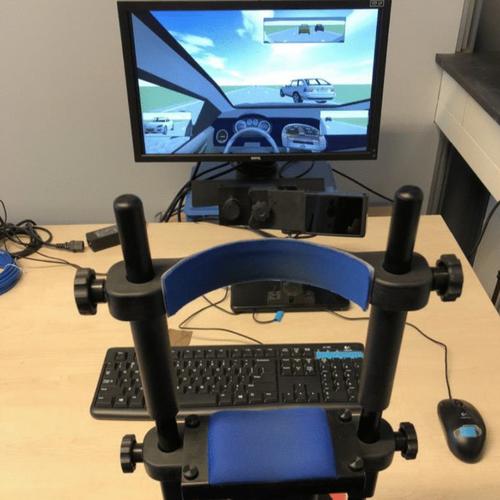Journal on Multimodal User Interfaces ( IF 2.9 ) Pub Date : 2022-05-25 , DOI: 10.1007/s12193-022-00390-6 Joost de Winter , Jimmy Hu , Bastiaan Petermeijer

|
Cars are increasingly capable of providing drivers with warnings and advice. However, whether drivers should be provided with ipsilateral warnings (signaling the direction to steer towards) or contralateral warnings (signaling the direction to avoid) is inconclusive. Furthermore, how auditory warnings and visual information from the driving environment together contribute to drivers’ responses is relatively unexplored. In this study, 34 participants were presented with animated video clips of traffic situations on a three-lane road, while their eye movements were recorded with an eye-tracker. The videos ended with a near collision in front after 1, 3, or 6 s, while either the left or the right lane was safe to swerve into. Participants were instructed to make safe lane-change decisions by pressing the left or right arrow key. Upon the start of each video, participants heard a warning: Go Left/Right (ipsilateral), Danger Left/Right (contralateral), and nondirectional beeps (Baseline), emitted from the spatially corresponding left and right speakers. The results showed no significant differences in response times and accuracy between ipsilateral and contralateral warnings, although participants rated ipsilateral warnings as more satisfactory. Ipsilateral and contralateral warnings both improved response times in situations in which the left/right hazard was not yet manifest or was poorly visible. Participants fixated on salient and relevant vehicles as quickly as 220 ms after the trial started, with no significant differences between the audio types. In conclusion, directional warnings can aid in making a correct left/right evasive decision while not affecting the visual attention distribution.
中文翻译:

同侧和对侧警告:在接近碰撞的情况下对决策和眼球运动的影响
汽车越来越有能力为驾驶员提供警告和建议。但是,是否应向驾驶员提供同侧警告(指示转向方向)或对侧警告(指示要避开的方向)尚无定论。此外,来自驾驶环境的听觉警告和视觉信息如何共同促成驾驶员的反应相对来说还没有被探索过。在这项研究中,向 34 名参与者展示了三车道道路上的交通状况动画视频剪辑,同时使用眼动仪记录了他们的眼球运动。视频在 1 秒、3 秒或 6 秒后以接近碰撞结束,而左侧或右侧车道可以安全转向。参与者被指示通过按向左或向右箭头键做出安全的变道决定。在每个视频开始时,参与者都会听到警告:左/右(同侧)、危险左/右(对侧)和非定向蜂鸣声(基线),从空间上对应的左右扬声器发出。结果显示,同侧和对侧警告之间的响应时间和准确性没有显着差异,尽管参与者认为同侧警告更令人满意。在左/右危险尚未明显或不明显的情况下,同侧和对侧警告都可以提高响应时间。参与者在试验开始后最快 220 毫秒就注视着显着的相关车辆,音频类型之间没有显着差异。综上所述,



























 京公网安备 11010802027423号
京公网安备 11010802027423号